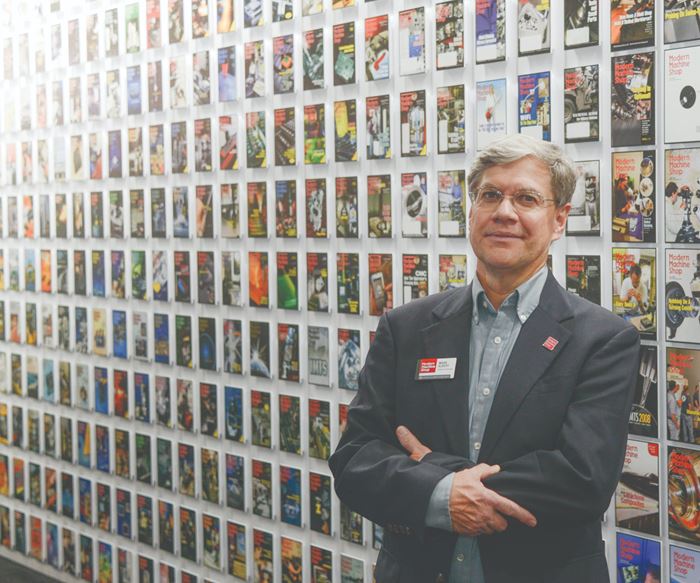IMTS: Then and Now
Mark Albert, editorial director of Modern Machine Shop, attended his first IMTS in 1980, when what is now McCormick Place was one building, spillover exhibitors were housed in a printing warehouse and PCs were just arriving on the scene.
Since 1927, IMTS has evolved alongside the manufacturing industry itself. What started out as the National Machine Tool Builders’ Exposition, spanning 63,000 square feet of exhibit space in Cleveland attracting 12,000 attendees, has grown into today’s 1.3 million-square-foot international show.
Mark Albert, editorial director of Modern Machine Shop, attended his first IMTS in 1980. During his 20th show, he shares his perspective on how it has developed and changed over the years.
Remembering back to his first show, Albert describes a much smaller version of today’s IMTS. What is now McCormick Place was one building, and spillover exhibitors were housed in a printing warehouse and in the basement of the Conrad Hilton Hotel down the street. Cincinnati’s Milacron was one of the must-see exhibits that year, displaying its flexible machining center and robots that were cutting-edge for the day.
Chicago itself was different then, too, with fewer attractions for visitors. “I think as IMTS has grown and McCormick Place has grown, Chicago has become a more inviting city to visit, and it provides this eye-popping backdrop to the show,” Albert says. “It’s become a fitting setting for what is North America’s greatest machine tool show.”
From the early days of personal computers to today’s additive manufacturing technology, the technology on display at IMTS has evolved along with the industry. In 1980, the new trend was computer numerical control, with game-changing personal computers arriving on the scene in the mid-1980s. Today’s cutting tool software and additive manufacturing are two technologies Albert says were unheard of in the ‘80s.
As the numbers of IMTS exhibitors and attendees have climbed over time, so has the number of other activities, with a full schedule of conferences and seminars, the Smartforce Student Summit and the Emerging Technology Center all joining today’s exhibit halls.
Over time, Albert notes that the “spectacle” of IMTS has grown as well. An increasing number of motorcycles, race car drivers or unusual workpieces have joined the displays over the years, and he says it all adds to the celebratory nature of the event. “There’s a buzz in the Grand Concourse when the show opens that you certainly couldn’t detect before,” he says.
As Albert goes into his 20th IMTS, he reflects that for him, the best part of the show has always been the people. “When I go from booth to booth to booth, I’m looking at people I’ve known for years and even decades,” he says. “I want to hear the new things they’re showing in their booth and the new things about their companies, but also I want to catch up with them as people, and what’s going on in their lives.”
One thing Albert doesn’t see changing anytime soon is IMTS’s identity as a place for making connections. “Even though we have all sorts of digital tools to learn about technology, IMTS lets us see things with our own eyes, meet people in person and discover not only technology but the people behind the technology,” he says. “That’s still a very important part of how we discover and acquire technology. It’s still a great place to connect with people.”
IMTS 2018 has plenty of room for making connections, with something new to see for every attendee—whether is it their first show, or their 20th.
Read Next
The Cut Scene: The Finer Details of Large-Format Machining
Small details and features can have an outsized impact on large parts, such as Barbco’s collapsible utility drill head.
Read More3 Mistakes That Cause CNC Programs to Fail
Despite enhancements to manufacturing technology, there are still issues today that can cause programs to fail. These failures can cause lost time, scrapped parts, damaged machines and even injured operators.
Read More
.jpg;width=70;height=70;mode=crop)

.JPG;width=860)
.JPG;width=860)






.png;maxWidth=300;quality=90)












